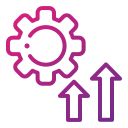Habits for Staying Productive in a Home Office
Chosen theme: Habits for Staying Productive in a Home Office. Welcome to a practical, encouraging space where small, repeatable habits drive big results. Whether your desk sits by a sunny window or a kitchen table, we’ll help you cultivate daily rhythms that protect focus, energize your body, and keep your motivation alive. Stick around, comment with your own routines, and subscribe to join a friendly community fine‑tuning the craft of productive remote work.

The 10‑Minute Warm‑Up
Begin with the same ten minutes every morning: clear your desk, open your task list, read yesterday’s notes, and breathe. This tiny ritual quiets anxiety, reduces friction, and gently nudges your mind from domestic mode into focused work mode.
A Commute That Doesn’t Move
Simulate a commute by walking around the block before you sit down. On rainy days, pace a hallway while listening to one energizing song. This habit separates spaces mentally, and your focus often arrives by the time your track ends.
The Close‑Down Checklist
End with a five‑step checklist: capture loose tasks, schedule tomorrow’s top three, tidy your surface, close apps, and power down. Your evening feels lighter, and tomorrow’s start becomes quicker. Share your checklist in the comments to inspire others.
Master Your Focus: Deep Work in a Noisy Home
Time Blocking That Actually Sticks
Reserve two deep‑work blocks on your calendar, even if only forty minutes each. Protect them like meetings. Turn phones face down, silence notifications, and quickly note incoming thoughts on paper so your brain learns to trust you won’t forget.


Single‑Tasking With a Visible Queue
Keep a small physical card with three tasks only. Work from top to bottom without rearranging once the timer starts. The visible queue keeps you honest, and finishing the card provides a satisfying, momentum‑building win by midday.
Hydration Anchors
Attach water to existing routines: two big sips after each meeting, a refill after your morning deep‑work block, and a glass before lunch. A visible bottle within reach turns hydration from a vague intention into a dependable, energizing habit.
Movement Snacks
Every fifty minutes, stand, roll your shoulders, and walk thirty steps. Add a two‑minute stretch while your coffee brews. These quick resets reduce stiffness, boost circulation, and bring back alertness without derailing your momentum or schedule.
Boundaries That Protect Your Time
Office Hours Signaling
Post office hours on the fridge or a shared calendar so family knows when you’re available. Use a desk lamp color or door sign for quick signals. Consistent cues reduce negotiations and keep you in flow more often.
Interruptions Protocol
Agree on rules for urgent versus non‑urgent requests. A notepad outside your door helps others park ideas without knocking. Reassure them you’ll check during breaks. This gentle system preserves relationships while protecting your concentrated time.
Saying No Gracefully
Prepare friendly scripts: “I’m heads‑down until two; can we handle this after?” Practicing once makes it easier later. Share your best boundary line in the comments—your words could become someone else’s productivity lifeline this week.
Tools as Habits: Automations and Templates

A Morning Template That Opens Itself
Launch your day with an auto‑opening note that prompts your top three tasks, deep‑work blocks, and a gratitude line. When the template appears, you act. Habit paired with a trigger reduces willpower and speeds the first decision.

Automation Chains
Filter newsletters into a reading folder, mute non‑critical chats during focus blocks, and auto‑color calendar categories. Small automations reduce context switching. Tell us which shortcut saved you the most time so others can copy it.

The Two‑Minute Rule, Digitally
If a task takes under two minutes, do it now; otherwise, schedule it. Use quick‑capture shortcuts on phone and desktop. Your brain relaxes when it trusts your system, and cluttered thoughts become trackable, actionable items.
Motivation That Lasts: Meaning, Momentum, and Community
Write a one‑sentence purpose for your current project and pin it near your screen. When energy dips, read it aloud. Clarity transforms effort into commitment, especially in a home office where temptations constantly compete for attention.


Motivation That Lasts: Meaning, Momentum, and Community
Track a simple streak: deep work completed, movement breaks, or end‑of‑day shutdowns. A visible calendar with checkmarks turns progress into a game. Share your streak in the comments to encourage someone starting fresh this week.
Join our mailing list
